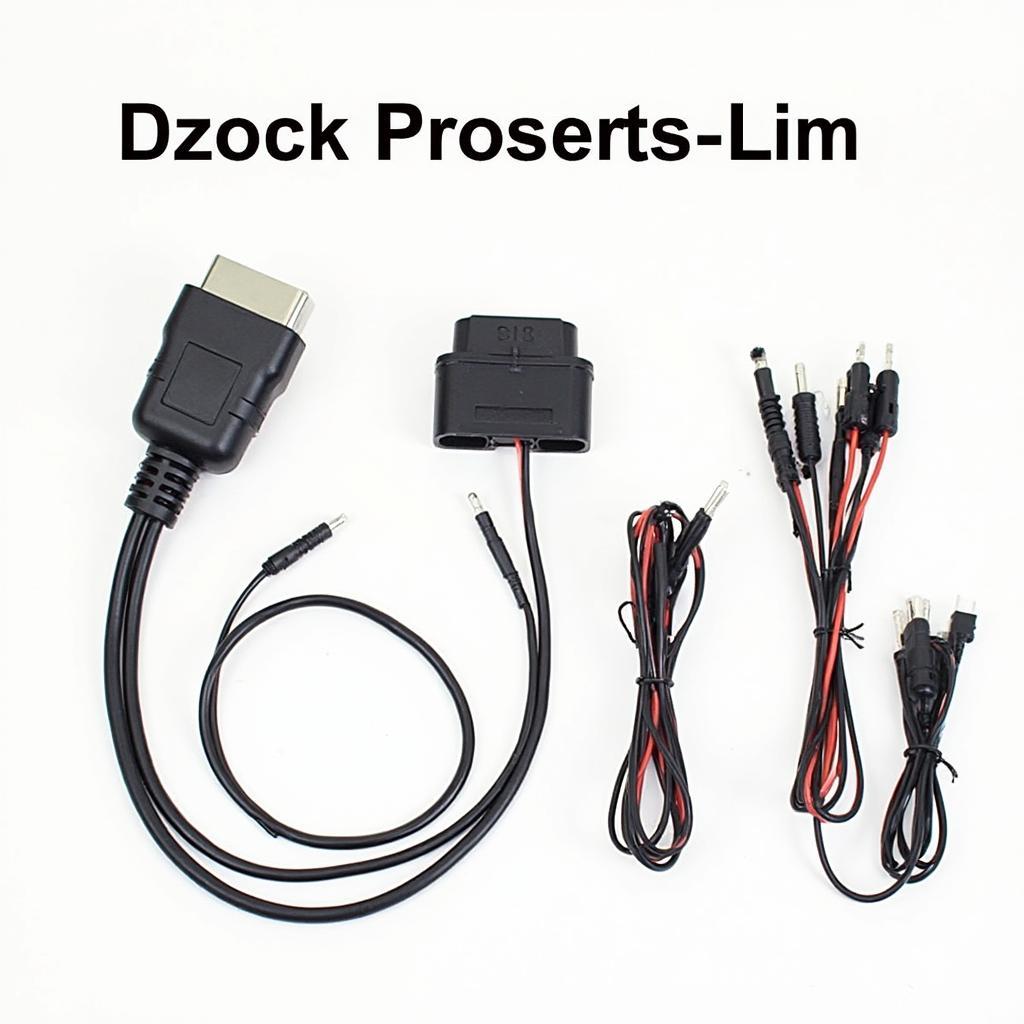Your cart is currently empty!

Understanding the 20 Pin Male Connector OBD2 Kit
The 20 Pin Male Connector Obd2 Kit is a crucial component for anyone working with vehicle diagnostics. From professional mechanics to DIY enthusiasts, understanding its function and applications can unlock a wealth of information about your vehicle’s health and performance. This comprehensive guide will delve into the intricacies of the 20 pin male connector OBD2 kit, exploring its uses, benefits, and various applications.
Connecting your diagnostic tool to your vehicle’s OBD2 system is often the first step in troubleshooting car problems. An obd2 connector kit can be invaluable for creating custom diagnostic setups or repairing damaged connectors.
What is a 20 Pin Male Connector OBD2 Kit?
The standard OBD2 connector has 16 pins, so a 20-pin variant often signifies a connection for a specific vehicle manufacturer or for heavy-duty vehicles using protocols like J1939. These kits typically include the 20-pin male connector, wiring harnesses, and sometimes even software or adapters to bridge communication between the OBD2 system and diagnostic tools. They are essential for accessing and interpreting the data transmitted by the vehicle’s electronic control units (ECUs).
Why Choose a 20 Pin Male Connector OBD2 Kit?
Choosing the right kit offers numerous advantages. These kits provide a tailored solution for specific vehicles or applications. This specificity ensures compatibility and reliable data transmission, crucial for accurate diagnostics. They can also offer expandability, allowing for additional connections or functionalities beyond standard OBD2 capabilities. This flexibility proves invaluable for advanced diagnostics and specialized applications.
 20 Pin Male Connector OBD2 Kit Components
20 Pin Male Connector OBD2 Kit Components
Common Uses of a 20 Pin Male Connector OBD2 Kit
These kits find applications in various scenarios:
- Heavy-duty vehicle diagnostics: Many heavy-duty vehicles utilize the J1939 protocol, which often employs a 20-pin connector. These kits are essential for accessing engine data, transmission information, and other vital parameters in these vehicles.
- Custom diagnostic setups: If you’re building a custom diagnostic setup, a 20-pin male connector kit allows you to tailor the connection to your specific needs. You can create adapters, integrate custom wiring, and even build your own diagnostic interfaces.
- Repairing damaged connectors: A damaged OBD2 connector can severely hamper diagnostic capabilities. These kits provide a convenient way to replace broken connectors and restore functionality.
Considering converting an older vehicle to OBD2 standards? An obd1 to obd2 adaptor could be the solution you’re searching for.
How to Choose the Right 20 Pin Male Connector OBD2 Kit
Selecting the appropriate kit depends on several factors:
- Vehicle Compatibility: Ensure the kit is compatible with your specific vehicle make, model, and year. This is crucial for accurate data retrieval and avoiding potential damage.
- Protocol Support: Verify the kit supports the necessary protocols for your diagnostic needs. J1939, for instance, is common in heavy-duty vehicles.
- Quality and Durability: Opt for kits made from high-quality materials and connectors to ensure reliability and longevity. A durable kit can withstand repeated use and challenging environments.
Understanding the J1939 Protocol and Its Relevance to the 20 Pin Connector
J1939 is a higher-level protocol built upon the CAN bus, specifically designed for communication in heavy-duty vehicles. It defines message formats and data parameters for various systems, including engine, transmission, brakes, and more. The 20-pin connector is often used as the physical interface for J1939 communication, allowing diagnostic tools to access this rich data stream. Converting between OBD2 and J1939 can open up new diagnostic possibilities. Check out resources on obd2 male to j1939 male conversions for more information.
What are the key features of the J1939 protocol?
J1939 uses a standardized messaging format for consistent data interpretation across different vehicle makes and models. This standardization simplifies diagnostics and ensures compatibility between various diagnostic tools.
Interested in building your own OBD2 adapter? Learn more about the possibilities by exploring how to build obd2 adapter.
 J1939 Protocol and 20-Pin Connector
J1939 Protocol and 20-Pin Connector
Conclusion
The 20 pin male connector OBD2 kit is a valuable tool for anyone working with vehicle diagnostics, especially in the context of heavy-duty vehicles and custom diagnostic setups. Understanding its functionalities and selecting the right kit can greatly enhance your diagnostic capabilities. By choosing a high-quality kit and ensuring compatibility, you can unlock access to critical vehicle data and perform accurate diagnostics, leading to efficient troubleshooting and improved vehicle maintenance.
FAQ
- What is the difference between a 16-pin and 20-pin OBD2 connector?
- Where can I purchase a reliable 20-pin male connector OBD2 kit?
- What are the typical applications for J1939 diagnostics?
- Can I use a 20-pin kit with standard OBD2 software?
- How do I identify the correct pinout for my 20-pin connector?
- Are there any safety precautions to consider when using a 20-pin OBD2 kit?
- What are the future trends in OBD2 and J1939 diagnostics?
Need help with your car diagnostic tools? Contact us via WhatsApp: +1(641)206-8880 or Email: [email protected]. Our 24/7 customer service team is ready to assist you.

Leave a Reply